Dalam beberapa tahun terakhir, sifat unggul partikel ultrafine semakin diakui. Semakin banyak peneliti yang berfokus pada studi pembuatan serbuk halus. Penggilingan jet udara Teknologi, sebagai metode persiapan bubuk ultrafine yang penting, telah menjadi salah satu metode yang disukai untuk mengembangkan bahan bubuk mikro berkinerja tinggi. aplikasi pabrik jet udara telah berkembang di berbagai industri, termasuk farmasi, kimia, dan ilmu material, karena kemampuan mereka untuk mencapai presisi tinggi dan hasil yang halus. ukuran partikelTeknologi ini memastikan pengurangan ukuran partikel yang efektif sambil mempertahankan kualitas dan karakteristik bahan yang sensitif.
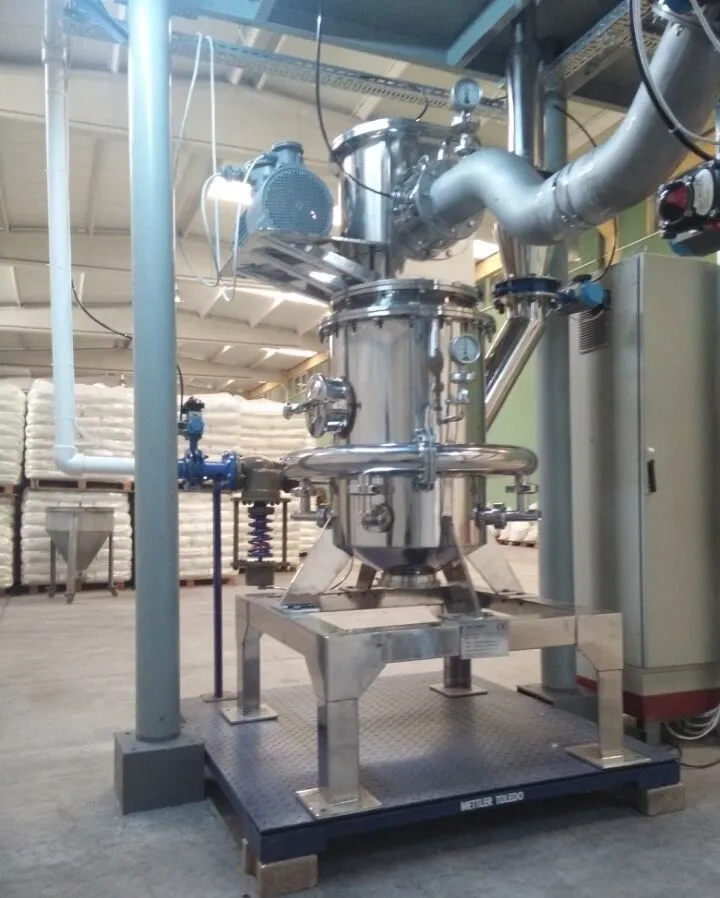
Fitur dari pabrik jet udara
Itu pabrik jet udara, juga dikenal sebagai pabrik energi terfluidisasi, menggunakan aliran udara berkecepatan tinggi untuk menghancurkan material. Pabrik ini menghancurkan material melalui benturan, benturan, dan geseran dengan komponen benturan. Produk yang dihancurkan dengan pabrik jet udara memiliki kehalusan yang seragam dan distribusi ukuran partikel yang sempit. Bubuknya memiliki kemurnian tinggi, permukaan halus, bentuk teratur, dan dispersibilitas yang baik. Proses ini menghasilkan kontaminasi minimal, bahkan mencapai lingkungan yang bebas kontaminasi dan steril. Hal ini membuatnya cocok untuk penggilingan sangat halus di bidang seperti makanan dan farmasi.
Penggilingan jet udara tidak melepaskan sejumlah besar panas selama penggilingan. Dengan demikian, penggilingan jet udara lebih cocok untuk menggiling bahan yang titik lelehnya rendah atau sensitif terhadap panas. Proses produksinya sangat otomatis, sehingga ideal untuk produksi industri skala besar. Penggilingan jet udara juga dapat menggabungkan penggilingan dengan langkah-langkah berikutnya, seperti pengeringan atau lapisan. Alat ini dapat menggiling material secara bersamaan sambil menyemprotkan larutan untuk pelapisan atau modifikasi permukaan. Namun, metode ini memiliki kekurangan berupa konsumsi energi yang tinggi.
Aplikasi pabrik jet udara
Dengan banyak keunggulannya, air jet mill memegang peranan yang amat penting di banyak bidang.
Pertambangan dan Metalurgi
Penerapan teknologi air jet mill berawal dari industri pertambangan dan metalurgi. Teknologi ini telah dipelajari secara ekstensif untuk persiapan serbuk logam dan non-logam yang sangat halus. Teknologi ini banyak digunakan untuk penggilingan logam dan non-logam yang sangat halus. mineral non logam seperti bedak, marmer, kaolin, dan mika. Ia juga diaplikasikan pada produksi serbuk ultrafine dari tungsten karbida, perak, dan tantalum karbida. Dalam beberapa tahun terakhir, penggilingan jet udara telah menunjukkan potensi baru dalam pemisahan material dan pemanfaatan sumber daya limbah padat.
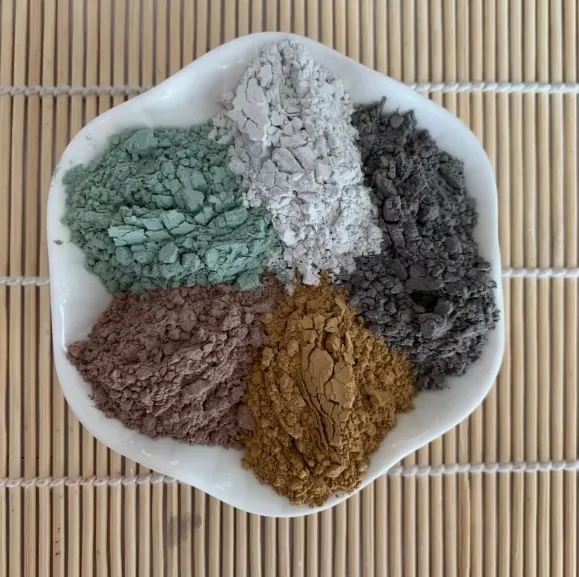
Militer, dirgantara dan bidang lainnya
Bahan serbuk ultrafine dapat digunakan untuk memproduksi bahan siluman untuk aplikasi seperti pesawat terbang dan tank yang tidak terlihat. Propelan roket yang terbuat dari oksidator yang digiling dengan jet udara, katalis, dan komponen lainnya memiliki kecepatan pembakaran lebih dari dua kali lipat dari propelan konvensional.
Industri kimia, energi dan bidang lainnya
Titanium dioksida, yang digunakan sebagai pigmen, memerlukan ukuran partikel dan kemurnian yang tinggi. Penggilingan jet udara biasanya digunakan untuk menghancurkan titanium dioksida guna memenuhi persyaratan ini. Titanium dioksida yang digiling dengan jet udara memiliki stabilitas dan sifat optik yang lebih baik. Kinerja katalitik aluminium hidroksida ditingkatkan setelah penggilingan jet udara, dan dapat digunakan sebagai pengisi marmer buatan dan fiberglass. Dalam produksi karet, nano seng oksida yang digiling dengan jet udara memiliki efek de-aglomerasi yang baik. Dispersinya dalam pelarut organik juga ditingkatkan, sehingga meningkatkan sifat vulkanisasi karet alam. Di sektor energi, jerami yang diolah terlebih dahulu setelah penggilingan berdampak pada pembentukan residu fermentasi. Ini membantu fermentasi biogas dan meningkatkan tingkat pemanfaatan energi jerami.
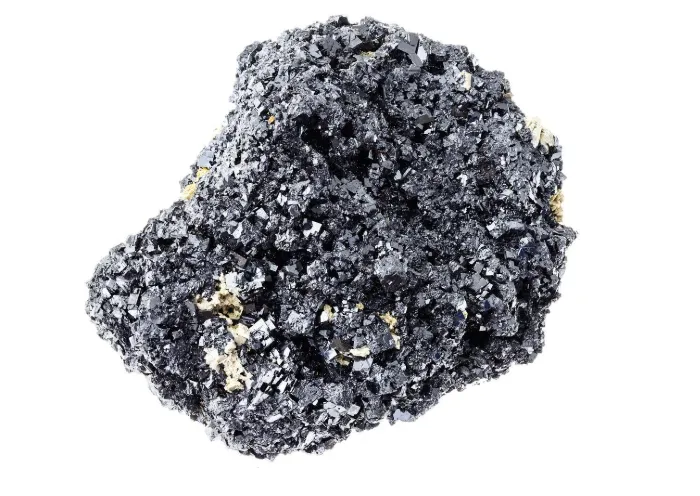
Bidang medis
Penggiling jet udara dapat menghancurkan herba tradisional Tiongkok yang umum seperti ginseng, krisan, notoginseng, goji berry, dan forsythia. Penggiling ini dapat menggiling bahan baku herba hingga ukuran partikel 1 hingga 5 μm. Serbuk yang dihasilkan memiliki partikel halus, distribusi sempit, dan kontaminasi minimal, yang sangat bermanfaat untuk pembubaran dan penyerapan obat. Selain itu, penggiling jet udara dapat menghancurkan bahan keras seperti kerang dan tulang yang digunakan dalam herba tradisional Tiongkok.

Industri makanan
Kulit apel, kulit jeruk, dedak gandum, kulit jagung, kulit kedelai, dedak padi, bubur bit, dan ampas tebu kaya akan vitamin dan elemen jejak. Bahan-bahan ini memiliki nilai gizi yang besar, tetapi rasanya buruk dan penyerapannya terbatas jika dikonsumsi langsung. Setelah diproses secara halus oleh pabrik jet udara, rasa dan penyerapan bahan-bahan ini meningkat secara signifikan.

Kosmetik
Pewarna dan bubuk pengisi, bila digiling dengan jet udara dan ditambahkan ke alas bedak atau perona mata, akan meningkatkan kepadatan bubuk. Daya rekat dan kehalusannya juga meningkat. Dalam produk perawatan kulit, andrografolida menjadi lebih larut dalam air setelah penggilingan dengan jet udara, sehingga dapat larut dengan cepat sambil mempertahankan aktivitas antibakterinya. Bubuk VC dan bubuk mutiara, setelah penggilingan dengan jet udara yang sangat halus, lebih mudah diserap bila ditambahkan ke produk perawatan kulit.
Elektronik
Bubuk oksida besi ultrahalus dapat digunakan untuk menghasilkan bahan magnetik berkinerja tinggi.
Bubuk silika ultrafine dapat digunakan untuk memproduksi material resistif berkinerja tinggi. Bubuk aluminium oksida dengan kemurnian tinggi ultrafine digunakan untuk memproduksi substrat safir untuk chip LED. Substrat yang terbuat dari bubuk ultrafine memiliki stabilitas yang baik, transmisi cahaya, dan tidak menyerap cahaya tampak. Bubuk molibdenum yang diolah dengan teknologi penggilingan jet udara memiliki ukuran partikel yang lebih kecil, distribusi ukuran partikel yang lebih sempit, dan morfologi yang seragam. Kepadatan massal dan kepadatan tapped-nya ditingkatkan, membuatnya lebih cocok untuk memproduksi bola lampu, tabung elektronik, dan sirkuit terpadu.
Medan energi baru
Material yang dihancurkan oleh air jet mill memiliki ukuran partikel rata-rata yang halus dan distribusi ukuran yang sempit. Partikel-partikel tersebut memiliki permukaan yang halus, bentuk yang seragam, kemurnian tinggi, aktivitas tinggi, dan dispersibilitas yang baik. Properti-properti ini memenuhi persyaratan untuk persiapan material elektroda, yang mengarah ke aplikasi yang luas. Material-material khas yang cocok untuk air jet milling meliputi litium mangan oksida, litium kobalt oksida, dan litium besi fosfatBahan lainnya termasuk litium karbonat, grafit bulat, kokas minyak bumi, kokas aspal, dan material terner. Paduan nikel-hidrogen, oksalat besi, litium titanat, dan nikel-mangan litium oksida juga dapat digunakan.
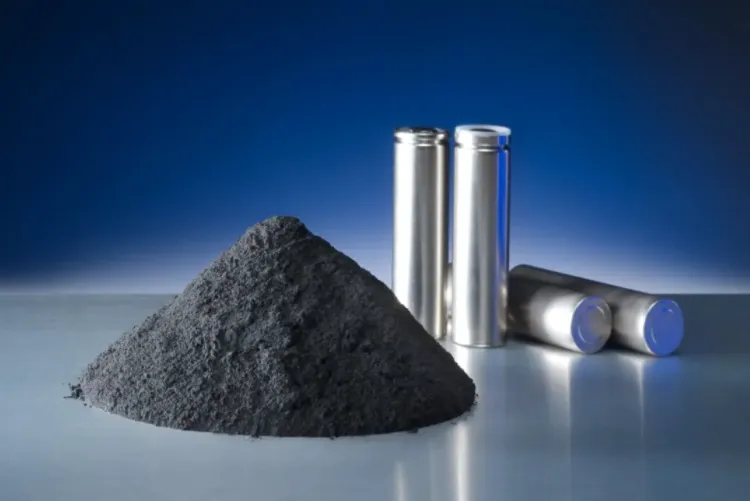
Klasifikasi pabrik jet udara
Pabrik jet udara datar
Mesin penggiling jet udara tipe datar, yang juga dikenal sebagai mesin penggiling jet udara cakram horizontal, merupakan mesin penggiling jet udara yang paling banyak digunakan dalam industri. Mesin ini memiliki struktur yang sederhana, pengoperasian yang mudah, dan klasifikasi otomatis. Namun, peralatan ini memiliki energi benturan dan kekuatan penggilingan yang rendah. Saat memproses material dengan kekerasan tinggi, benturan dan gesekan yang kuat dengan dinding ruang dapat menyebabkan kontaminasi. Mesin ini cocok untuk berbagai macam material, terutama yang terdiri dari agregat atau aglomerat.
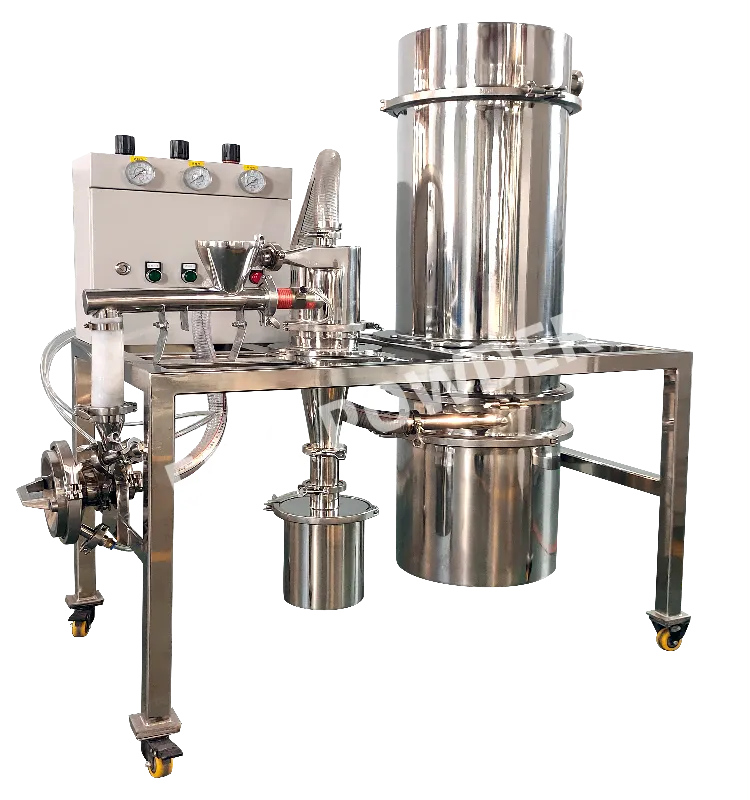
Pabrik jet udara dengan lapisan terfluidisasi
Mesin penggiling jet udara dengan unggun terfluidisasi merupakan jenis baru mesin penggiling jet udara. Mesin ini memiliki keunggulan seperti distribusi ukuran partikel yang sempit, efisiensi penggilingan yang tinggi, konsumsi energi yang rendah, kontaminasi produk yang minimal, dan keausan komponen yang rendah. Akan tetapi, peralatan ini memiliki biaya yang lebih tinggi.
Karena material harus difluidisasi agar dapat dihancurkan oleh semburan udara, biasanya material harus memiliki kehalusan yang cukup. Hal ini terutama penting untuk material dengan kepadatan tinggi. Umumnya digunakan dalam industri seperti resin sintetis, resin fenolik, farmasi, kosmetik, keramik canggih, bubuk magnetik, dan material baterai untuk penggilingan, dispersi, dan pembentukan yang sangat halus.
Kesimpulan
Ada berbagai jenis peralatan penggilingan jet udara ultrafine, masing-masing dengan perbedaan struktural yang jelas. Setiap jenis memiliki kelebihan dan kekurangannya masing-masing. Di masa mendatang, tren pengembangan utama peralatan penggilingan jet udara ultrafine akan difokuskan pada peningkatan output mesin tunggal dan pengurangan konsumsi energi per unit produk. Peningkatan kehalusan produk dan peningkatan batas penghancuran peralatan juga akan menjadi area pengembangan utama. Kontrol daring terhadap kehalusan produk dan distribusi ukuran partikel akan menjadi semakin penting.
Bubuk epik
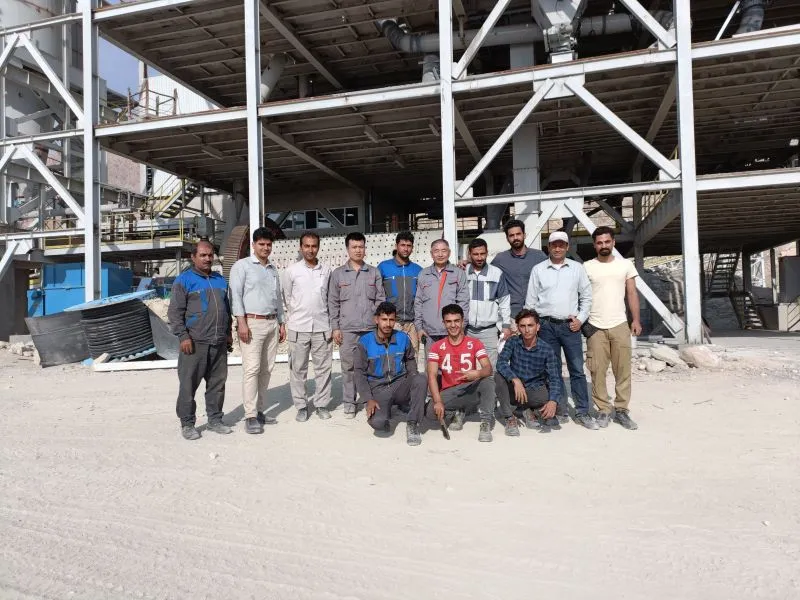
Epic Powder, 20+ tahun pengalaman kerja di industri bubuk ultrafine. Secara aktif mempromosikan pengembangan bubuk ultra-fine di masa depan, dengan fokus pada proses penghancuran, penggilingan, pengklasifikasian, dan modifikasi bubuk ultra-fine. Hubungi kami untuk konsultasi gratis dan solusi yang disesuaikan! Tim ahli kami berdedikasi untuk menyediakan produk dan layanan berkualitas tinggi guna memaksimalkan nilai pemrosesan bubuk Anda. Epic Powder—Ahli Pemrosesan Bubuk Tepercaya Anda!
